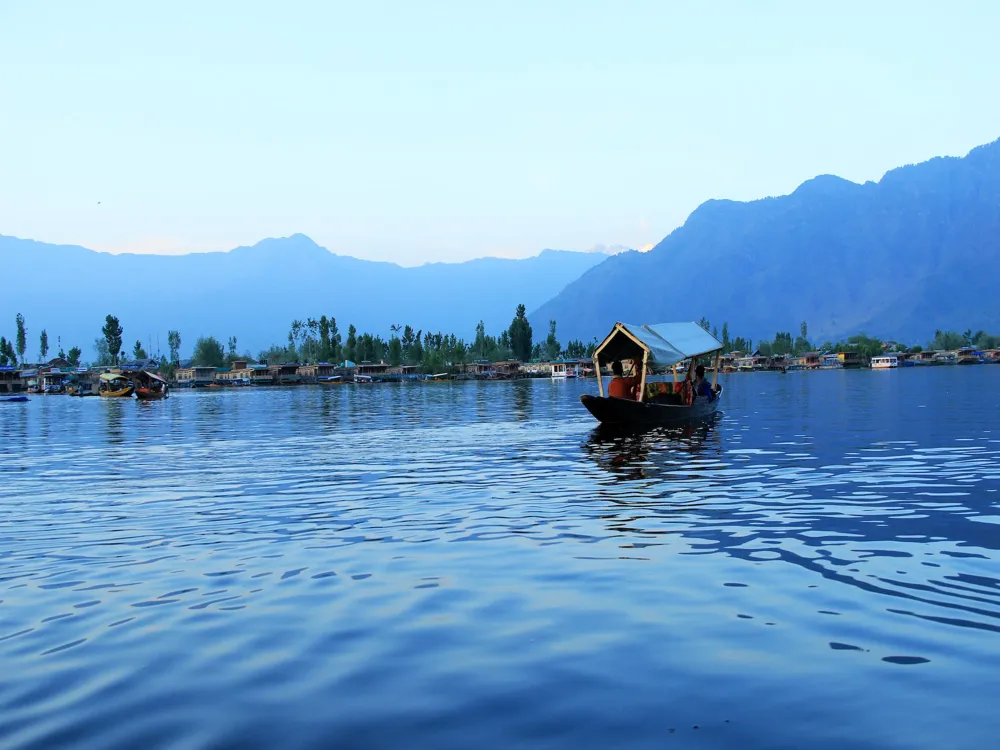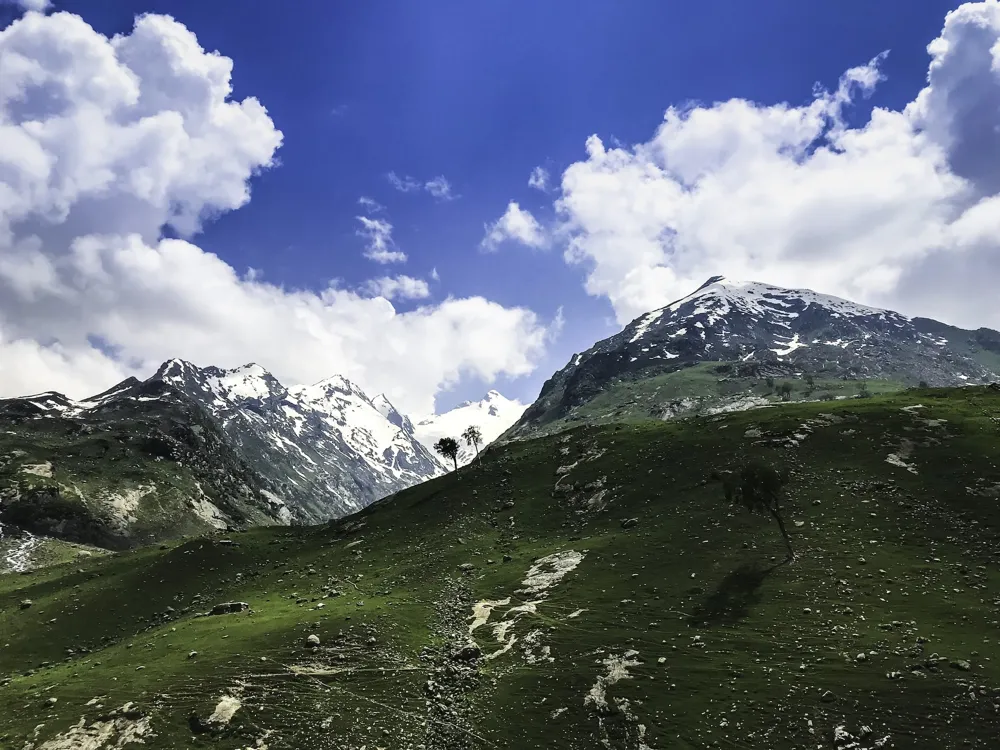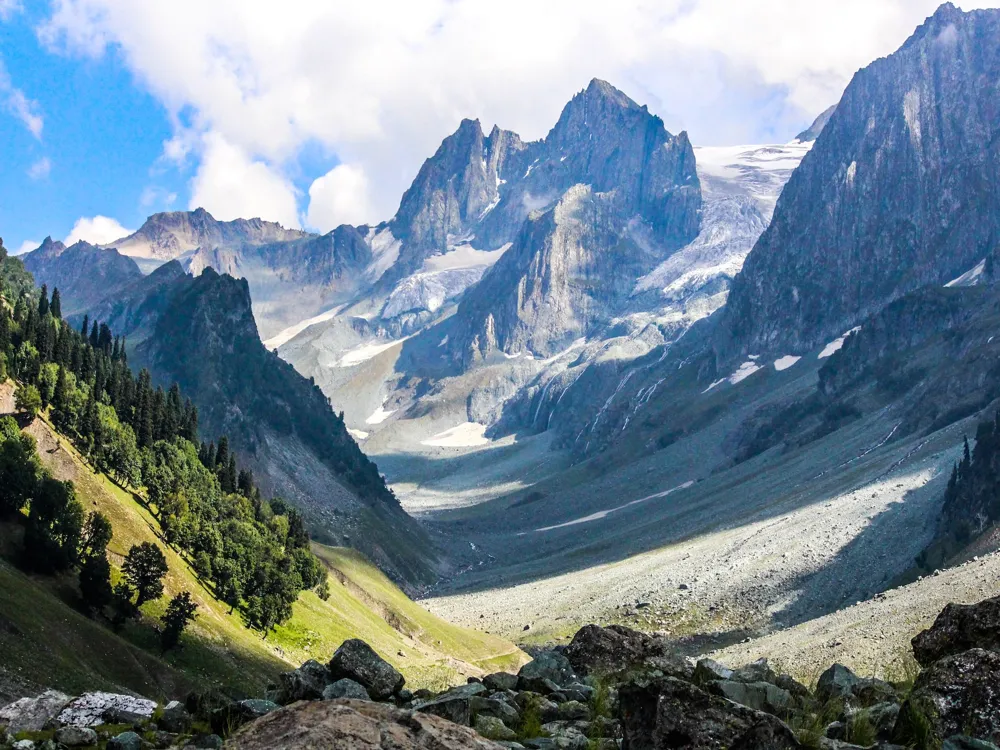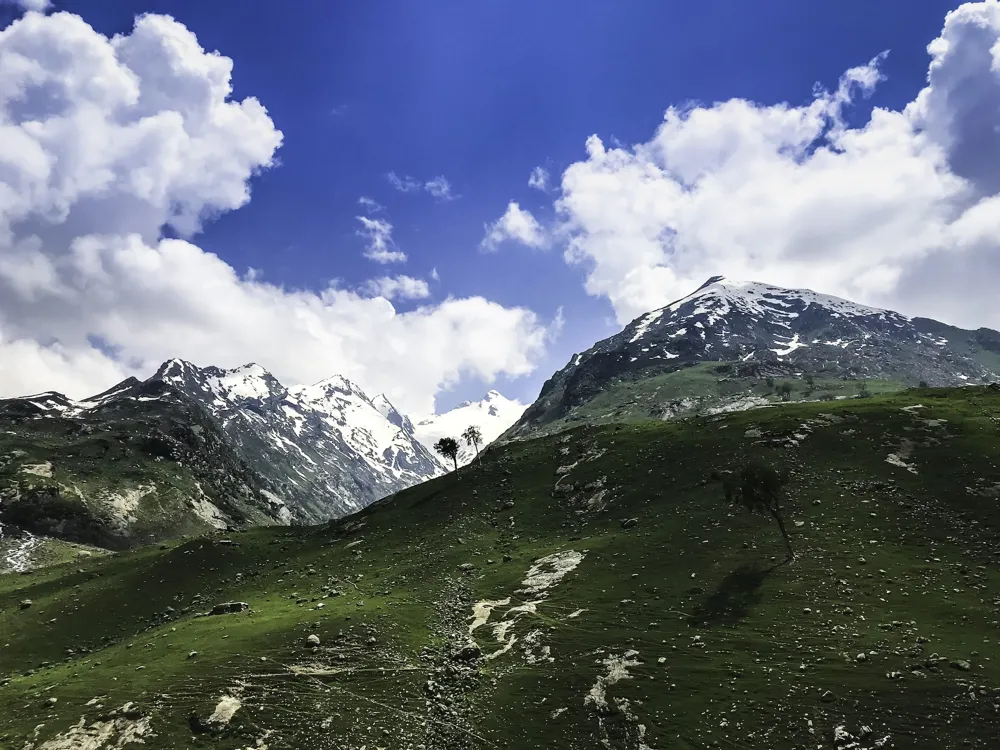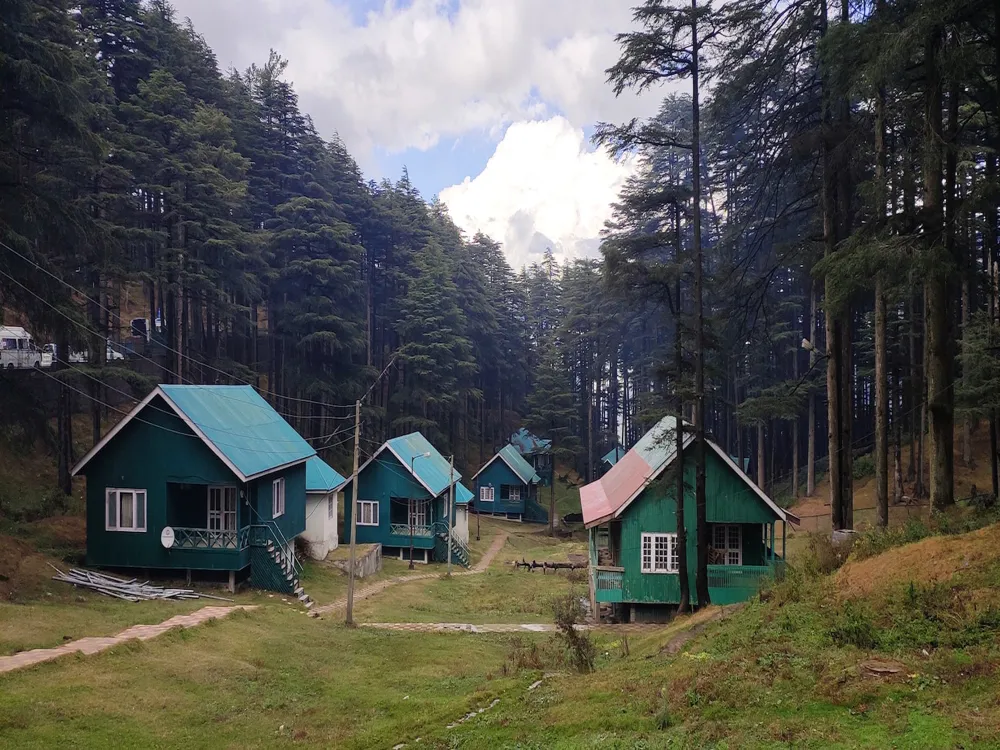Kishtwar National Park, located in the Anantnag region of Jammu and Kashmir, India, is a majestic natural reserve that spans over an area of approximately 400 square kilometers. Established in 1981, this park is renowned for its unique biodiversity and picturesque landscapes. It's nestled in the rugged terrains of the Himalayas, offering a haven for wildlife enthusiasts and nature lovers. The park is home to a rich variety of flora and fauna. The dense forests of Kishtwar are primarily composed of conifers, providing a lush green canopy that stretches across the vast expanses of the park. This verdant landscape is punctuated by alpine meadows, rugged valleys, and steep mountainous terrains, which contribute to the park's unique ecological diversity. Wildlife in Kishtwar National Park is both diverse and abundant. It serves as a habitat for several endangered species, including the Himalayan brown bear, musk deer, and the elusive snow leopard. Bird lovers can also find a paradise here, with numerous species of birds making their home in this pristine environment. The park's topography features several high-altitude lakes and rivers, adding to its scenic beauty. These water bodies not only support the park's ecosystem but also attract a variety of migratory birds, making it a significant bird-watching destination. The presence of rare medicinal plants and herbs in the park underscores its ecological importance. Kishtwar National Park's unique location at the confluence of various ecological zones contributes to its rich biodiversity. The park experiences a range of climatic conditions, from sub-tropical in the lower regions to alpine in the higher altitudes. This variation in climate supports a wide array of species, both in terms of flora and fauna. The architecture of Kishtwar National Park is not of the man-made variety but is a magnificent showcase of natural architecture. The park's terrain is a stunning mosaic of deep gorges, high ridges, and vast plateaus, all carved by the forces of nature over millions of years. The rugged landscape, with its natural rock formations, waterfalls, and undulating meadows, forms a breathtaking natural architecture that is both awe-inspiring and humbling. The park's ecosystem is structured in a way that supports a variety of life forms. At lower altitudes, the vegetation consists of dense forests dominated by fir, pine, and cedar trees. As one ascends, these give way to alpine pastures and meadows dotted with a variety of herbs and shrubs, which are particularly vibrant during the spring and summer months. Rivers and streams meander through the park, creating a network of waterways that sustain the park's diverse habitats. The natural water bodies are bordered by steep cliffs and rocky outcrops, adding a dramatic element to the landscape's natural architecture. Glaciers and snowfields are also significant components of Kishtwar National Park's architecture. These perennial snows feed the rivers and streams, ensuring a continuous supply of water throughout the year. The presence of glaciers adds to the park's mystique, making it a compelling destination for trekkers and adventure enthusiasts. The park's architectural beauty is complemented by its wildlife. The movement of animals across different zones, their habitats, and the interplay between various species form an integral part of the park's natural architecture. This dynamic ecosystem is a perfect example of nature's intricate design and balance. The ideal time to visit Kishtwar National Park is between May and October. During these months, the weather is pleasant, and the park's flora and fauna are at their most vibrant. Visitors should pack warm clothing, rain gear, and comfortable hiking shoes. It's also advisable to carry binoculars for wildlife spotting and a camera to capture the stunning landscapes. Opting for a guided tour can enhance your experience, as local guides are knowledgeable about the best spots for wildlife viewing and can provide valuable insights into the park's ecology. It's crucial to maintain a safe distance from wild animals and to avoid feeding or disturbing them. Always follow park regulations to ensure your safety and the well-being of the wildlife. Visitors are encouraged to follow eco-friendly practices, such as disposing of waste properly and minimizing their environmental footprint. Kishtwar National Park is accessible via road from Jammu. The nearest airport is in Jammu, approximately 250 kilometers away. From Jammu, visitors can hire taxis or take buses to reach Kishtwar. The last stretch to the park might require a trek or a ride on a local vehicle, depending on the entry point chosen. For those preferring rail travel, the nearest railway station is also in Jammu. From the station, one can avail of local transport options to reach Kishtwar. The journey offers a glimpse into the region's culture and scenic beauty, making it an integral part of the experience. Read More:Overview of Kishtwar National Park
Architecture of Kishtwar National Park
Tips When Visiting Kishtwar National Park
Best Time to Visit
What to Bring
Guided Tours
Respect Wildlife
Eco-Friendly Practices
How To Reach Kishtwar National Park
Kishtwar National Park
Anantnag
Jammu And Kashmir
NaN onwards
View anantnag Packages
Weather :
Tags : National Park
Timings : Day time
Entry Fee : No entry fee
Planning a Trip? Ask Your Question
Anantnag Travel Packages
View All Packages For Anantnag
Top Hotel Collections for Anantnag

Private Pool

Luxury Hotels

5-Star Hotels

Pet Friendly
Top Hotels Near Anantnag
Other Top Ranking Places In Anantnag
View All Places To Visit In anantnag
Faq on Anantnag
What is Kishtwar National Park in Anantnag?
Kishtwar National Park, situated in Anantnag district of Jammu and Kashmir, is a renowned wildlife sanctuary known for its diverse flora and fauna.
What are the timings and entry fees for Kishtwar National Park?
The park is usually open from sunrise to sunset. Entry fees vary, and it's advisable to check with local authorities for the latest information.
What kind of wildlife can be found in Kishtwar National Park?
Kishtwar National Park is home to a variety of wildlife species including the Himalayan brown bear, snow leopard, musk deer, ibex, and numerous bird species.
Are there any accommodation options available near Kishtwar National Park?
Yes, there are accommodation options available in nearby areas. It's recommended to book in advance, especially during peak seasons.
What are the best activities to do in Kishtwar National Park?
Visitors can enjoy activities such as wildlife safaris, bird watching, trekking, and nature walks amidst the picturesque landscape of the park.
View anantnag Packages
Weather :
Tags : National Park
Timings : Day time
Entry Fee : No entry fee
Planning a Trip? Ask Your Question
Anantnag Travel Packages
View All Packages For Anantnag
Top Hotel Collections for Anantnag

Private Pool

Luxury Hotels

5-Star Hotels

Pet Friendly
Top Hotels Near Anantnag
Other Top Ranking Places In Anantnag
Faq on Anantnag
What is Kishtwar National Park in Anantnag?
Kishtwar National Park, situated in Anantnag district of Jammu and Kashmir, is a renowned wildlife sanctuary known for its diverse flora and fauna.
What are the timings and entry fees for Kishtwar National Park?
The park is usually open from sunrise to sunset. Entry fees vary, and it's advisable to check with local authorities for the latest information.
What kind of wildlife can be found in Kishtwar National Park?
Kishtwar National Park is home to a variety of wildlife species including the Himalayan brown bear, snow leopard, musk deer, ibex, and numerous bird species.
Are there any accommodation options available near Kishtwar National Park?
Yes, there are accommodation options available in nearby areas. It's recommended to book in advance, especially during peak seasons.
What are the best activities to do in Kishtwar National Park?
Visitors can enjoy activities such as wildlife safaris, bird watching, trekking, and nature walks amidst the picturesque landscape of the park.












